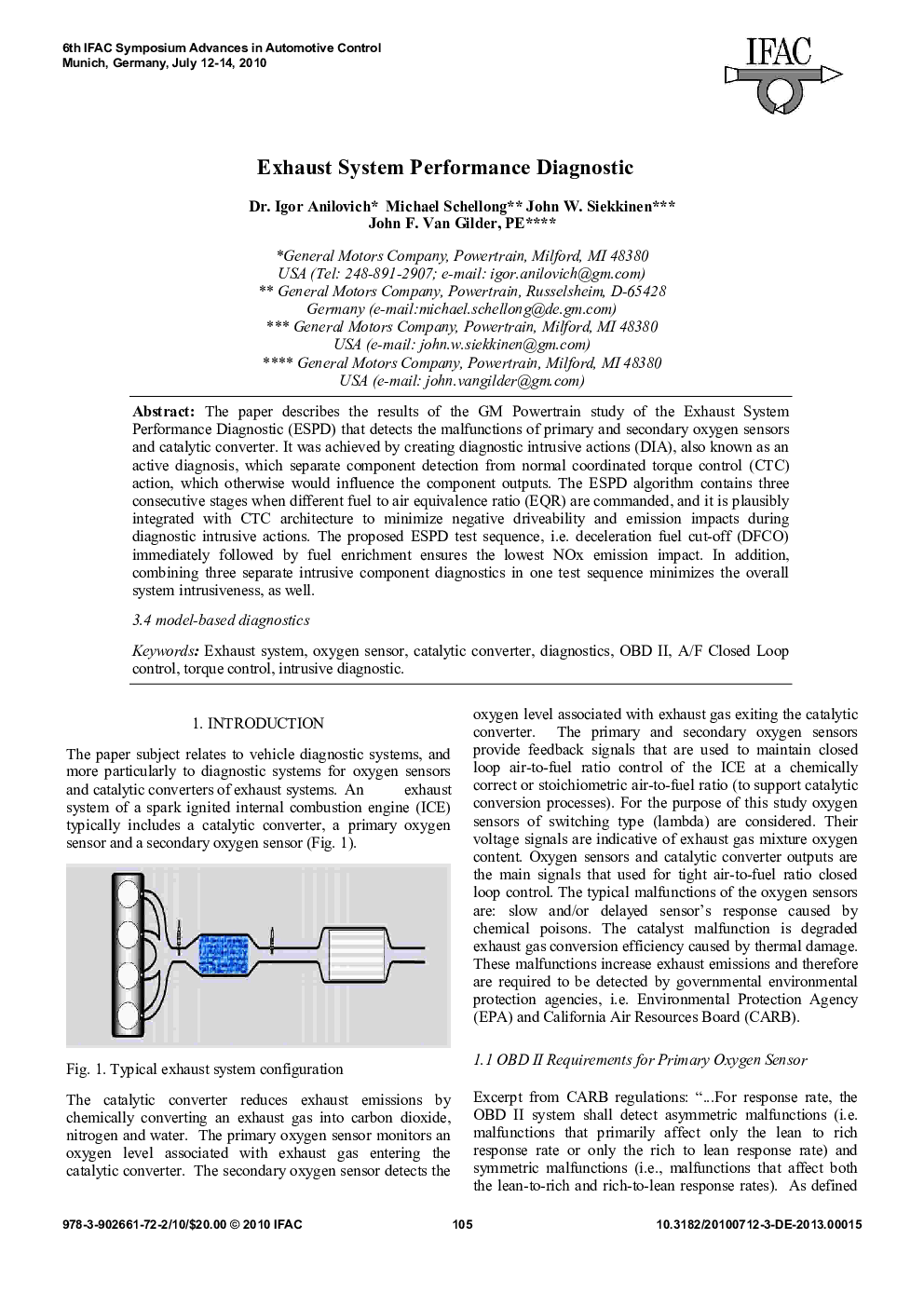| Article ID | Journal | Published Year | Pages | File Type |
|---|---|---|---|---|
| 719875 | IFAC Proceedings Volumes | 2010 | 6 Pages |
The paper describes the results of the GM Powertrain study of the Exhaust System Performance Diagnostic (ESPD) that detects the malfunctions of primary and secondary oxygen sensors and catalytic converter. It was achieved by creating diagnostic intrusive actions (DIA), also known as an active diagnosis, which separate component detection from normal coordinated torque control (CTC) action, which otherwise would influence the component outputs. The ESPD algorithm contains three consecutive stages when different fuel to air equivalence ratio (EQR) are commanded, and it is plausibly integrated with CTC architecture to minimize negative driveability and emission impacts during diagnostic intrusive actions. The proposed ESPD test sequence, i.e. deceleration fuel cut-off (DFCO) immediately followed by fuel enrichment ensures the lowest NOx emission impact. In addition, combining three separate intrusive component diagnostics in one test sequence minimizes the overall system intrusiveness, as well. 3.4 model-based diagnostics
